- Unity User Manual 2021.3 (LTS)
- 图形
- 着色器
- 编写着色器
- 编写表面着色器
- 表面着色器光照示例
表面着色器光照示例
本页提供了表面着色器中的自定义表面着色器光照模型的示例。要进一步了解常规表面着色器指南,请参阅表面着色器示例。
因为__延迟光照__与一些自定义的每材质光照模型不兼容,所以下面的大多数示例都使着色器仅编译到__前向渲染__。
渲染管线兼容性
| 功能名称 | 内置渲染管线 | 通用渲染管线 (URP) | 高清渲染管线 (HDRP) | 自定义 SRP |
|---|---|---|---|---|
| 表面着色器 | 是 | 否 有关在 URP 中创建 Shader 对象的简化方法,请参阅 Shader Graph。 |
否 有关在 HDRP 中创建 Shader 对象的简化方法,请参阅 Shader Graph。 |
否 |
Diffuse
以下是使用内置兰伯特光照模型的着色器示例:
Shader "Example/Diffuse Texture" {
Properties {
_MainTex ("Texture", 2D) = "white" {}
}
SubShader {
Tags { "RenderType" = "Opaque" }
CGPROGRAM
#pragma surface surf Lambert
struct Input {
float2 uv_MainTex;
};
sampler2D _MainTex;
void surf (Input IN, inout SurfaceOutput o) {
o.Albedo = tex2D (_MainTex, IN.uv_MainTex).rgb;
}
ENDCG
}
Fallback "Diffuse"
}
以下是有纹理和没有纹理的外观(在场景中使用一个方向光):
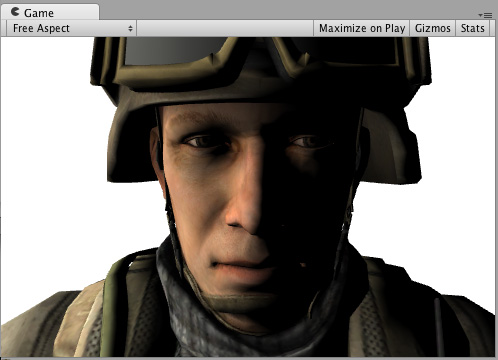
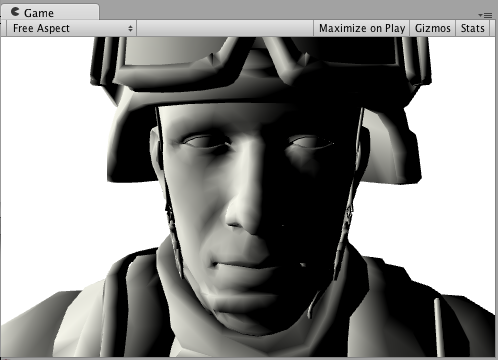
以下示例显示了如何通过编写自定义光照模型(而不是使用内置兰伯特模型)来实现相同的结果。
为此,您需要使用许多表面着色器光照模型函数。下面是一个简单的兰伯特光照模型。请注意,只有CGPROGRAM 部分发生变化;周围的着色器代码完全相同:
Shader "Example/Diffuse Texture" {
Properties {
_MainTex ("Texture", 2D) = "white" {}
}
SubShader {
Tags { "RenderType" = "Opaque" }
CGPROGRAM
#pragma surface surf SimpleLambert
half4 LightingSimpleLambert (SurfaceOutput s, half3 lightDir, half atten) {
half NdotL = dot (s.Normal, lightDir);
half4 c;
c.rgb = s.Albedo * _LightColor0.rgb * (NdotL * atten);
c.a = s.Alpha;
return c;
}
struct Input {
float2 uv_MainTex;
};
sampler2D _MainTex;
void surf (Input IN, inout SurfaceOutput o) {
o.Albedo = tex2D (_MainTex, IN.uv_MainTex).rgb;
}
ENDCG
}
Fallback "Diffuse"
}
这个简单的漫射光照模型使用了 LightingSimpleLambert 函数。它通过以下方式计算光照:计算表面法线和光线方向之间的点积,然后应用光衰减和颜色。
漫射环绕
以下示例显示了__环绕漫射__,这是对__漫射__光照的修改,其中光照“环绕着”对象的边缘。它对于模拟次表面散射效果很有用。只有 CGPROGRAM 部分发生变化,这里同样省略了周围的着色器代码:
...ShaderLab code...
CGPROGRAM
#pragma surface surf WrapLambert
half4 LightingWrapLambert (SurfaceOutput s, half3 lightDir, half atten) {
half NdotL = dot (s.Normal, lightDir);
half diff = NdotL * 0.5 + 0.5;
half4 c;
c.rgb = s.Albedo * _LightColor0.rgb * (diff * atten);
c.a = s.Alpha;
return c;
}
struct Input {
float2 uv_MainTex;
};
sampler2D _MainTex;
void surf (Input IN, inout SurfaceOutput o) {
o.Albedo = tex2D (_MainTex, IN.uv_MainTex).rgb;
}
ENDCG
...ShaderLab code...
以下是有纹理和没有纹理的外观(在场景中使用一个方向光):
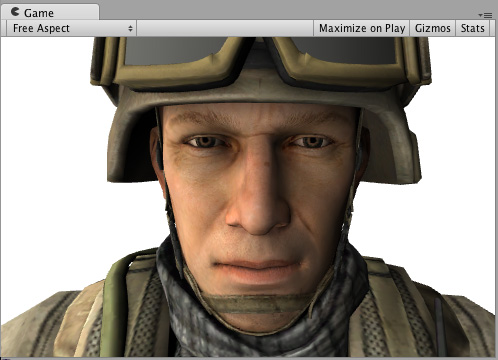
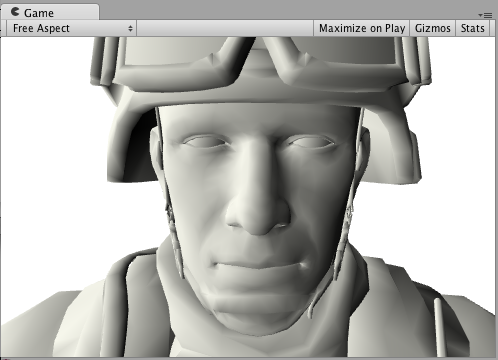
卡通渐变 (Toon Ramp)
以下示例显示了一个“渐变”光照模型,该模型使用纹理渐变来定义表面如何响应光源和法线之间的角度。这可以用于各种效果,并且在与__卡通__光照一起使用时尤其有效。
...ShaderLab code...
CGPROGRAM
#pragma surface surf Ramp
sampler2D _Ramp;
half4 LightingRamp (SurfaceOutput s, half3 lightDir, half atten) {
half NdotL = dot (s.Normal, lightDir);
half diff = NdotL * 0.5 + 0.5;
half3 ramp = tex2D (_Ramp, float2(diff)).rgb;
half4 c;
c.rgb = s.Albedo * _LightColor0.rgb * ramp * atten;
c.a = s.Alpha;
return c;
}
struct Input {
float2 uv_MainTex;
};
sampler2D _MainTex;
void surf (Input IN, inout SurfaceOutput o) {
o.Albedo = tex2D (_MainTex, IN.uv_MainTex).rgb;
}
ENDCG
...ShaderLab code...
以下是有纹理和没有纹理的外观(在场景中使用一个方向光):
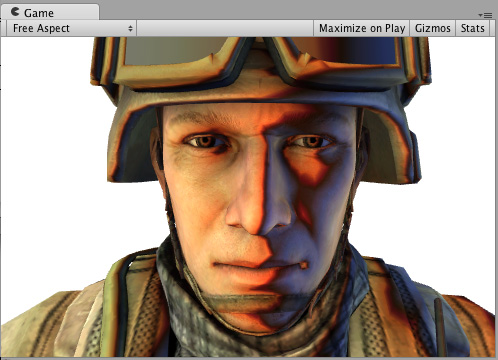
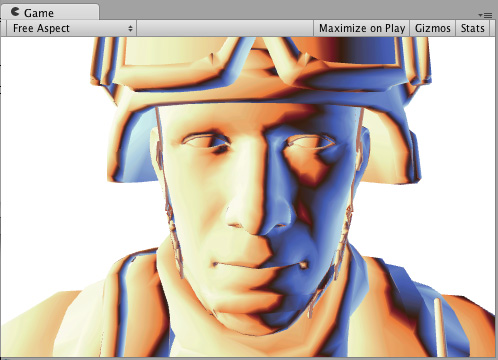

简单镜面反射
以下示例显示了一个简单的镜面反射光照模型,类似于内置的 BlinnPhong 光照模型。
...ShaderLab code...
CGPROGRAM
#pragma surface surf SimpleSpecular
half4 LightingSimpleSpecular (SurfaceOutput s, half3 lightDir, half3 viewDir, half atten) {
half3 h = normalize (lightDir + viewDir);
half diff = max (0, dot (s.Normal, lightDir));
float nh = max (0, dot (s.Normal, h));
float spec = pow (nh, 48.0);
half4 c;
c.rgb = (s.Albedo * _LightColor0.rgb * diff + _LightColor0.rgb * spec) * atten;
c.a = s.Alpha;
return c;
}
struct Input {
float2 uv_MainTex;
};
sampler2D _MainTex;
void surf (Input IN, inout SurfaceOutput o) {
o.Albedo = tex2D (_MainTex, IN.uv_MainTex).rgb;
}
ENDCG
...ShaderLab code...
以下是有纹理和没有纹理的外观(在场景中使用一个方向光):
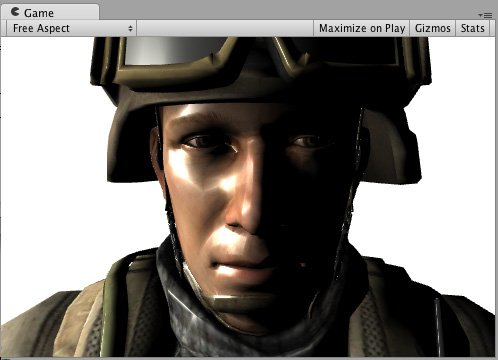
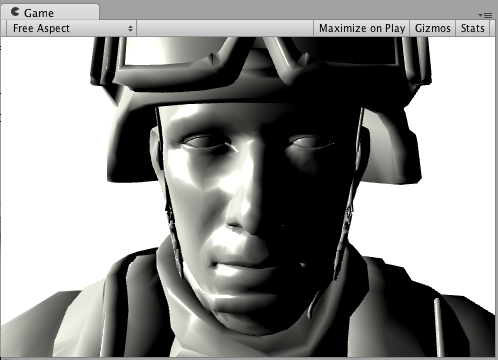
自定义 GI
我们将从一个模仿 Unity 内置 GI 的着色器开始:
Shader "Example/CustomGI_ToneMapped" {
Properties {
_MainTex ("Albedo (RGB)", 2D) = "white" {}
}
SubShader {
Tags { "RenderType"="Opaque" }
CGPROGRAM
#pragma surface surf StandardDefaultGI
#include "UnityPBSLighting.cginc"
sampler2D _MainTex;
inline half4 LightingStandardDefaultGI(SurfaceOutputStandard s, half3 viewDir, UnityGI gi)
{
return LightingStandard(s, viewDir, gi);
}
inline void LightingStandardDefaultGI_GI(
SurfaceOutputStandard s,
UnityGIInput data,
inout UnityGI gi)
{
LightingStandard_GI(s, data, gi);
}
struct Input {
float2 uv_MainTex;
};
void surf (Input IN, inout SurfaceOutputStandard o) {
o.Albedo = tex2D(_MainTex, IN.uv_MainTex);
}
ENDCG
}
FallBack "Diffuse"
}
现在,让我们在 GI 上添加一些色调映射:
Shader "Example/CustomGI_ToneMapped" {
Properties {
_MainTex ("Albedo (RGB)", 2D) = "white" {}
_Gain("Lightmap tone-mapping Gain", Float) = 1
_Knee("Lightmap tone-mapping Knee", Float) = 0.5
_Compress("Lightmap tone-mapping Compress", Float) = 0.33
}
SubShader {
Tags { "RenderType"="Opaque" }
CGPROGRAM
#pragma surface surf StandardToneMappedGI
#include "UnityPBSLighting.cginc"
half _Gain;
half _Knee;
half _Compress;
sampler2D _MainTex;
inline half3 TonemapLight(half3 i) {
i *= _Gain;
return (i > _Knee) ?(((i - _Knee)*_Compress) + _Knee) : i;
}
inline half4 LightingStandardToneMappedGI(SurfaceOutputStandard s, half3 viewDir, UnityGI gi)
{
return LightingStandard(s, viewDir, gi);
}
inline void LightingStandardToneMappedGI_GI(
SurfaceOutputStandard s,
UnityGIInput data,
inout UnityGI gi)
{
LightingStandard_GI(s, data, gi);
gi.light.color = TonemapLight(gi.light.color);
#ifdef DIRLIGHTMAP_SEPARATE
#ifdef LIGHTMAP_ON
gi.light2.color = TonemapLight(gi.light2.color);
#endif
#ifdef DYNAMICLIGHTMAP_ON
gi.light3.color = TonemapLight(gi.light3.color);
#endif
#endif
gi.indirect.diffuse = TonemapLight(gi.indirect.diffuse);
gi.indirect.specular = TonemapLight(gi.indirect.specular);
}
struct Input {
float2 uv_MainTex;
};
void surf (Input IN, inout SurfaceOutputStandard o) {
o.Albedo = tex2D(_MainTex, IN.uv_MainTex);
}
ENDCG
}
FallBack "Diffuse"
}
Copyright © 2022 Unity Technologies. Publication 2021.3